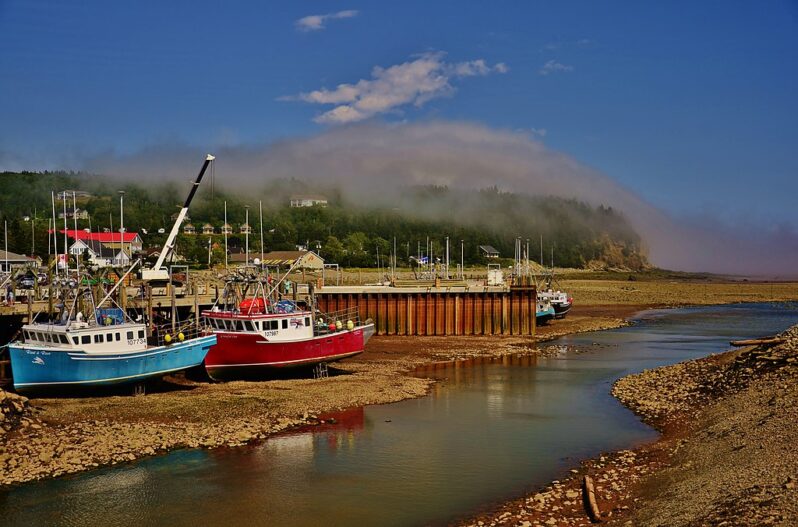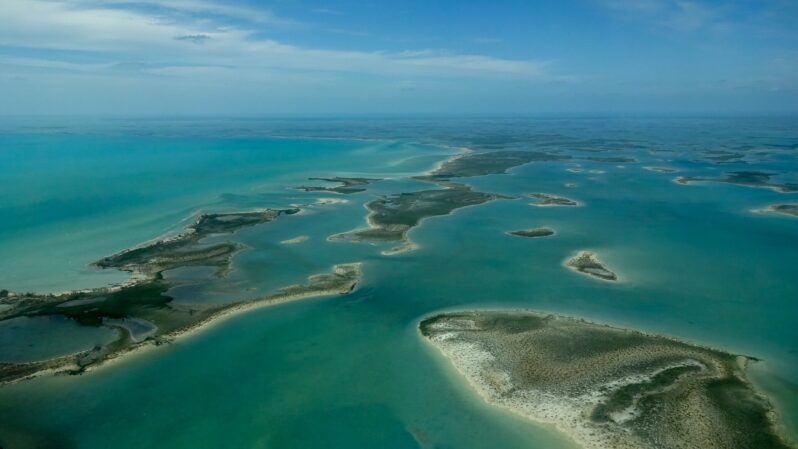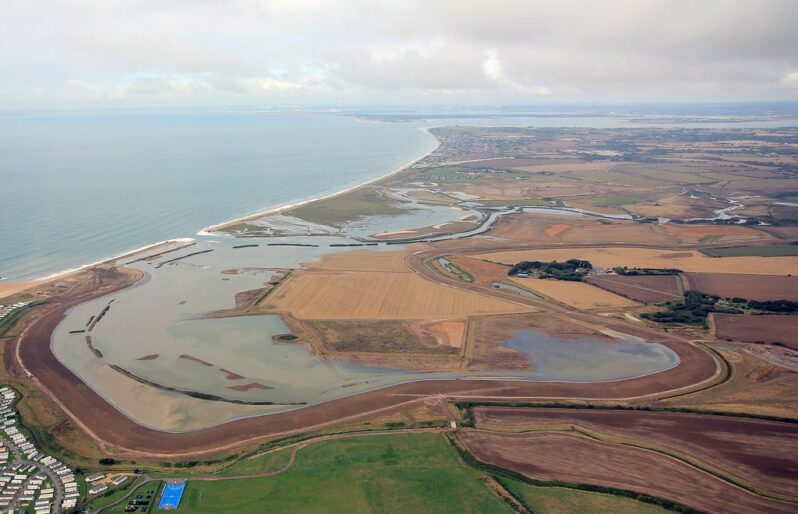How does sea level rise challenge modern notions of property lines? – Los Angeles Times

The (California) Coastal Act is a remarkable commitment to the public trust doctrine, which traces back to Justinian I, who declared in 533 C.E. that “the following things are natural law common to all: the air, running water, the sea, and consequently the seashore.” This notion — that certain lands should be held in trust by the government for the benefit of all people — evolved into English common law, which the United States then adopted and California later wrote into its state constitution…
Rising Sea Levels Will Isolate People Long Before They’re Underwater – Hakai Magazine

Time and tide wait for no man. Neither does sea level rise. The Chignecto Isthmus—the low marshy strip connecting New Brunswick and Nova Scotia—may be one of the most vulnerable places in Canada to sea level rise. At just 21 kilometers wide, the interprovincial land bridge is battered on its southwestern flank by the famously extreme tides in the Bay of Fundy. Protected by a network of earthen dikes first constructed in the 1600s, “the tops of the dikes are only a little higher than the spring high tides,” says Jeff Ollerhead, a coastal geomorphologist…“If we have a big storm,” he says, “water will go over the dikes.”
In the Bahamas, a Constant Race to Adapt to Climate Change – the New York Times

Rising seas and the ongoing threat of hurricanes and storm surges have forced the Caribbean nation to become a laboratory for climate adaptation.
At the United Nations climate summit in Egypt last year, Prime Minister Philip Davis of the Bahamas emerged as one of the most impassioned speakers among the more than 100 heads of state in attendance.
“We have to believe that a safer, better future is possible,” he told the gathering. “We believe that action — real, concerted action — can save the planet and save our human race…”
El Niño and extreme Atlantic Ocean heat are about to clash – the Conversation

Globally, warm sea surface temperatures that can fuel hurricanes have been off the charts in the spring of 2023, but what really matters for Atlantic hurricanes are the ocean temperatures in two locations: the North Atlantic basin…This year, the two are in conflict – and likely to exert counteracting influences on the crucial conditions that can make or break an Atlantic hurricane season. The result could be good news…But forecasters are warning that that hurricane forecast hinges on El Niño panning out…
The Tiny Craft Mapping Superstorms at Sea | Interactive – the New York Times

Shortly after dawn on Sept. 30, 2021, Richard Jenkins watched a Category 4 hurricane overrun his life’s work. The North Atlantic storm was a behemoth — 50,000 feet tall and 260 miles wide. Wind circled the eye wall at 143 miles per hour; waves the size of nine-story apartment buildings tumbled through a confused sea. Puerto Rico lay 500 miles to the southwest; Bermuda was 800 miles straight ahead. Eighty miles northwest, the 23-foot boat that Jenkins had designed and built over the last decade struggled to stay upright…
Students and Faculty at Ohio State Respond to a Bill That Would Restrict College Discussions of Climate Policies – Inside Climate News

Keely Fisher chose to pursue her Ph.D. at Ohio State University because she wanted to learn about climate change from a world-class faculty. Now one year into her program, she wonders if she belongs here.The problem has nothing to do with Ohio State and everything to do with the Ohio General Assembly and a proposal that would regulate higher education. The wide-ranging bill includes a provision that designates climate policy as a “controversial belief or policy” and says faculty must “encourage students to reach their own conclusions…
Letting the Sea Have Its Way – Hakai Magazine

On May 10, a four-bedroom house perched on the beach of a North Carolina barrier island in the town of Rodanthe collapsed into the ocean. It was not the victim of a violent hurricane strike or storm surge. Rather, a low-pressure system coupled with a high tide drew ocean waves onto the shoreline, leaving heaps of sand on the prophetically named Ocean Drive. Then—in that viral video moment—the water gently pulled the house loose and set it to bob upon the sea. It was not the first house—this year! that day!—nor will it be the last.This is reality in the 21st century…
New York City Is Sinking under Its Own Weight – Scientific American

The weight of New York City’s 1.1 million buildings is making the city slowly sink.
Home to 8.8 million people as of 2020, New York City is by far the most populous city in the U.S. And the mass of the buildings needed to support all those residents—and the work they do—really adds up. New research published on May 8 in Earth’s Future suggests that the weight of the city itself is pressing down on the land it occupies and contributing to local sea-level rise that increases flood risks…
Nearly 90% of Hanauma Bay’s beach could disappear by 2030, says UH study – Hawaii Public Radio

A new study from the Hawaiʻi Institute of Marine Biology at the University of Hawaiʻi at Mānoa is predicting most of Hanauma Bay’s beach will be underwater for a few days in 2030.
Researchers used models to show the impact of sea-level rise at the bay. They combined the lowest predicted rise of six inches with the island’s seasonal King Tides, when waves splash higher on the shore higher than normal.
It forecasts that 88% of the bay’s usable beach, or sandy portions, would be submerged in 2030…
